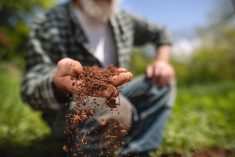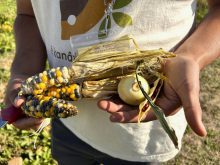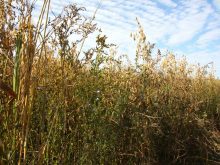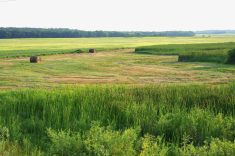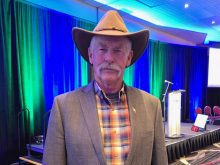Champions of regenerative agriculture have well-established talking points on cost-management and ecological goods and services when they pitch the management philosophy.
They might note reduced inputs costs, healthier and therefore more productive soil, less erosion or more beef raised per acre without strain on the land. They might mention gains in biodiversity, soil microbiology and organic matter.
If potential converts were looking for a better price because they farm regeneratively, however, the conversation usually gets a little thornier.
Read Also
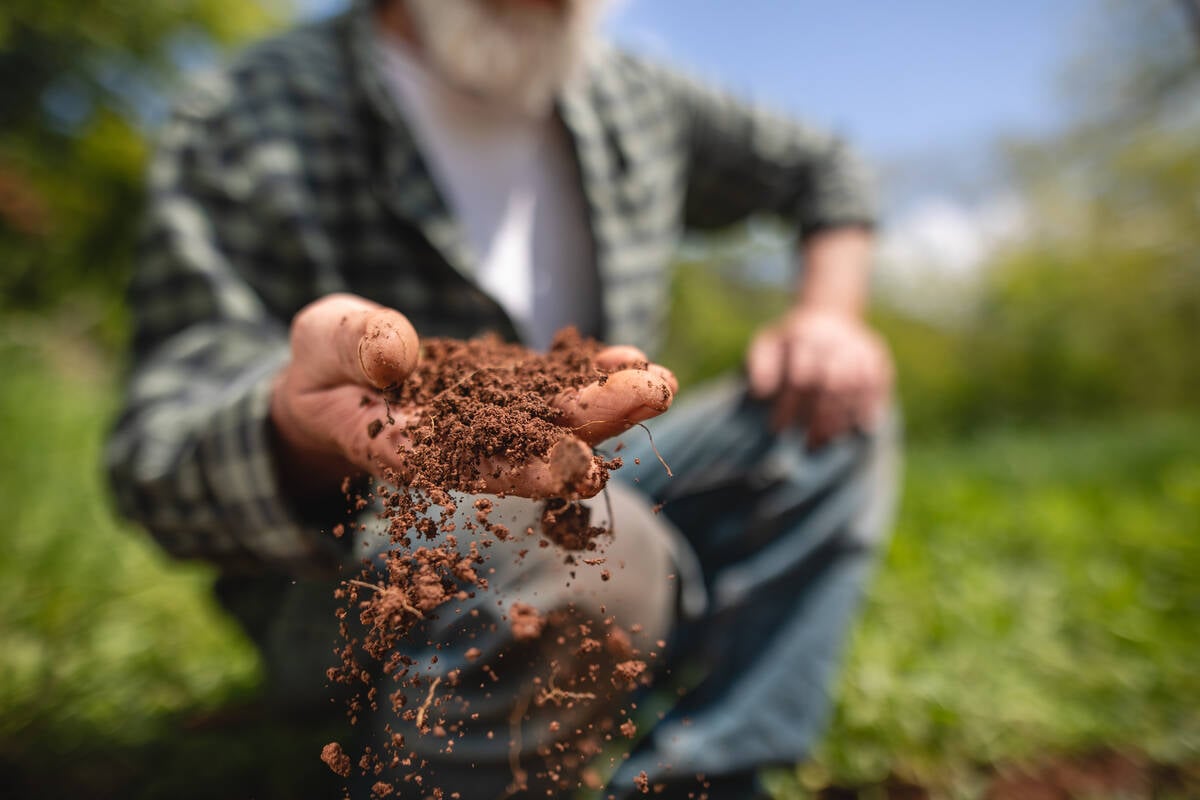
Finally getting paid for sustainable farming?
Alberta project says they might have a line on a workable ecosystem credit model to reward farmers for sustainability, and Manitoba might be next
Why it matters: A few regenerative certification programs are cropping up, but their development has been rife with complexities.
The definition of regenerative agriculture has historically and, in at least some part, purposefully, remained fuzzy. Unlike systems like organics, which have sold themselves on clear guidelines and standardized practices, past conversations around regenerative certification have stressed a need to keep things flexible. What works on one farm may not be applicable to the next, experts have noted, and thus the emphasis should be more on outcomes rather than a set list of standardized practice.

For Duncan Morrison, executive director of the Manitoba Forage and Grassland Association (MFGA), the movement’s strength lies in that adaptability, as well as its grassroots nature.
“MFGA has been very clear about not trying to define regenerative agriculture,” Morrison said. “We’ve been very adamant to stick to the five or six soil health principles, and that’s because we really find ourselves as facilitators of information.”
Rather than focusing on rigid definitions, he noted, his organization focuses on peer-to-peer learning, networking, and mentorship.
The association has become a major advocate for regenerative agriculture in the province, hosting a multi-day regenerative agriculture conference each year.
For those who want to raise regenerative ag’s public profile though, its complexity and flexibility is a challenge if they want to foster the same market clout as more well defined systems like organics have achieved.
What’s all out there?
Michael Thiele, one of the people behind regenerative agriculture consultancy Understanding Ag, says there is some skepticism on the burgeoning topic of regenerative certification. There are already a lot of stickers on food products for the c0nsumer to navigate.
“I get that part. Probably the last thing we need is more rules,” he said.
Understanding Ag has helped spearhead Regenified, Manitoba’s newest regenerative certification program. In October 2024, Abtshof Farms Ltd. near Elie became the first in the province verified. Nationwide, Regenfied got its first bite in 2023, when Axten Family Farms, owned by Derek and Tannis Axten in southern Saskatchewan, became the program’s first Canadian farm.

The program’s five-level framework focuses on on continuous improvement rather than static compliance, meant to encourage farmers to enhance soil health, biodiversity, and ecosystem outcomes over time.
“(With) organic, you get certified, and then you can do whatever you want, and…you can till the ground 20 times, and no one’s there to say, ‘hey, maybe you should do better,’” Thiele said. “Whereas, (with) Regenified, it’s all about making progress and helping you to get better.”
The program counts progress in terms of what proportion of the farm is regeneratively managed. At the first level, regenerative practices are being applied on less than 20 per cent of the farm. The second level would have 20 to 40 per cent of the operation managed regeneratively. The program continues to ramp up until the fifth and final level, where 80 to 100 per cent is managed regeneratively.
The certification process involves assessing farm-specific contexts and long-term ecosystem outcomes, such as soil health and biodiversity.
“Every farm is different,” said Shalar Shemirani, co-founder and CEO of Regenified. “A row crop production in British Columbia is very different than row crop production in southern Saskatchewan, different climate, different contexts, different soil type, different weather pattern, different frost season. So that’s why, for regenerative practices, one size doesn’t fit all.”
There is also the Savory Institute’s land monitoring protocol, called Ecological Outcome Verification (EOV), which has been implemented on over 4 million acres globally.
That regenerative certification tool is the cornerstone of the U.S.-based organization’s Land to Market (L2M) program, which links brands and retailers with farms and ranches verified for regenerating land.
The EOV’s metrics include biodiversity, soil health, water management and overall ecosystem function, including assessment on things like the water cycle, mineral cycle, energy flow and community dynamics. It’s designed for grassland, grazed orchards, silvopasture systems (agroforestry), mixed livestock-cropping systems and mixed livestock-forest areas.
Pure grain production does not currently fall under the program’s purview.
“The EOV program (allows) producers to know if they’re regenerating the land or if it is degrading. It (helps) them to know if the practices they are implementing are achieving positive results on the land,” said Dana Penrice, managing director of Holistic Management Canada, via email.

Penrice has been working with the Savory Institute to bring the EOV program to Canada. Most participants have come to the EOV through Holistic Management Canada’s Regenerative Accelerator program, where farmers are provided with expertise, funding and monitoring for a regenerative project on their farm.
Participating farmers learn to observe changes in biodiversity, the water cycle, mineral cycle, and photosynthesis, Penrice said.
“It’s a great tool for producers to get feedback from the land to make better management decisions.”
Corporate interests enter the chat
Corporate regenerative programs are also starting to appear, with food corporations under pressure to increase their sustainability and to reach for environmental goals like net-zero.
For some, such as General Mills, that has meant programs promoting regenerative adoption. The company has a goal of advancing regenerative ag on a million farm acres by the end of the decade.
Some corners of agriculture might also see regenerative practices become a requirement for doing business.
Potatoes, a crop that involves a lot of soil disturbance, have unique challenges when it comes to regenerative production, but potato processing giant McCain Foods wants all their potato acres incorporating such practices by 2030.
According to the company’s website, that includes keeping living plants on the soil to decrease soil erosion, enhancing crop diversity, minimizing soil disturbance, reducing the toxicity of pesticides, enhancing farm and ecosystem diversity, reducing agro-chemical impact and optimizing water use and increasing soil organic carbon.
McCain has set out four levels for their contracted farmers. The first, onboarding, requires producers to participate in a company sponsored regenerative agriculture training event and meet the requirements for one of the company’s seven sustainability indicators. They must also have completed a soil health assessment.
At the engaged level, farmers must have a soil health assessment and implement at least five of the company’s seven indicators. Certain indicators, like armouring soils and crop diversity, are mandatory at this level.
The advanced level would see producers increasing the number of species they grow and dedicating five per cent of non-cultivated land to natural habitat.
The final level, leading, is for producers who have increased soil protection and organic matter in soil, have minimized tillage, and who have 30 per cent of their potato crop nutrient requirements from organic sources such as plants or manure. Producers should also have reduced greenhouse gas emissions by “at least” 25 per cent, the McCain website states.
These types of corporate programs could bolster public awareness of regenerative agriculture, Morrison noted, but there’s also risk if regenerative standards start to get too muddled with corporate interest.
“The groups that have the most consumer impact are the ones that are kind of packaging this thing,” he said. “At the same (time), there needs to continue to be an understanding of those principles of regen ag, and I think that’s (what) the community is going to rally around.”
Morrison maintains that regenerative agriculture will thrive by fostering collaboration and innovation at the farm level.

Making a mark
It’s still early days though for regenerative certification programs. By the end of 2024, Regenified expected four Canadian farms to have joined the ranks, one in each Prairie province and a fourth in Ontario, although Shemirani noted growing interest in B.C.
And while some of those signing on hope for future premiums, right now the certification is more about laying groundwork than short-term revenue.
“We’re in the early stages of it, so we won’t necessarily reap big benefits from it right away, but it’s like the chicken and the egg,” Andreas Boersch of Abtshof Farms told the Co-operator in late 2024.
Establishing regenerative systems also takes time.
“You don’t make a regenerative farm in a day or a year,” Thiele said. “If you think there’s potential, get going now, because in five years, you may be at a level where you can get certified.”
Consumer education is another hurdle, he acknowledged. Regenerative agriculture does not garner a lot of public recognition, and few are familiar with regenerative practices. Outreach and education will be key.
Penrice, meanwhile, is optimistic that food labels will one day exist for regeneratively farmed goods just like they do with organic products.
“There is promise for this. We have some farmers in Manitoba who are using the EOV program and the Land to Market label to help tell their customers about the positive impact they are making on the land,” she said.
The Land to Market label is placed on products sourced from regenerative farm operations, according to the Land to Market website and the Savory Institute.
“The data from this third-party verification provides additional credibility to the story they are sharing with the public. These arms are mostly doing direct marketing,” Penrice added.
Consumer demand will be critical to achieving premiums for regenerative products, Thiele believes.
Another major challenge is developing collaborative supply chains of producers, processors, buyers and retailers, Penrice said.
“Verification is one piece to help with traceability and credibility, but there is a lot of work that needs to be done to get regenerative products into consumers’ hands on a broader scale. Many farmers are getting ready, but we need investment into the other pieces of the chain.”
The growth of regenerative agriculture also brings logistical challenges. Defining and measuring success is not straightforward. Outcomes like the organic matter found in soil, for example, can vary from field to field, and it can all get overly complicated, Morrison said. Soil type will also factor in.
Those types of complexities underline the need to keep regenerative agriculture nimble, as far as he’s concerned.
“Regen ag isn’t new… it isn’t a silver bullet. Sometimes your profit is measured not only what’s going into your bank account, but what’s not going out of your bank account,” Morrison said.




